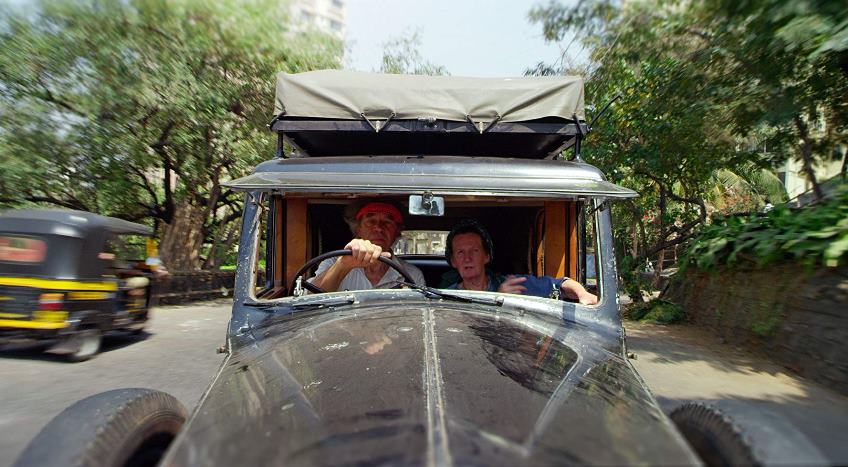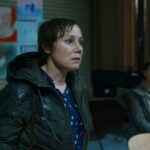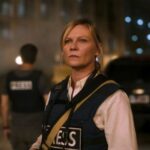Joyce Glasser reviews Romantic Road (October 8, 2021) Cert 12, 81 mins.
Rupert Grey is a London libel and copyright barrister married to Jan, with whom he has three daughters who grew up in a barn Grey built behind their beautiful thatched “cottage” in the South Downs. All very bourgeois you might say. There is another side to Grey that Romantic Road aims to capture, for Grey was always an adventurer, having travelled to far flung corners of the globe alone, then with Jan, and then with their children. Oliver McGarvey’s documentary covers Grey’s 2012-2013 road trip to India in a Rolls Royce, thirty years after he and Jan backpacked in the country as a young couple.
Grey sounds like quite a guy: fearless, adventurous and able to take on any task from manual labour to showing his photography in exhibitions to representing well-healed clients in the High Court. Talking heads attest to his brilliance in these domains, and also his endearing quirks, like bathing in a bathtub in his Sussex garden. Grey worked as a lumberjack in Canada; prospected for copper in the South Pacific; supervised the construction of schools on a remote island in Fiji; travelled down the Strickland River in Papua New Guinea in a dug-out canoe; and spent six months with Operation Drake as a photographer. His interest in photography led him to represent many photographers and to become a copyright expert.
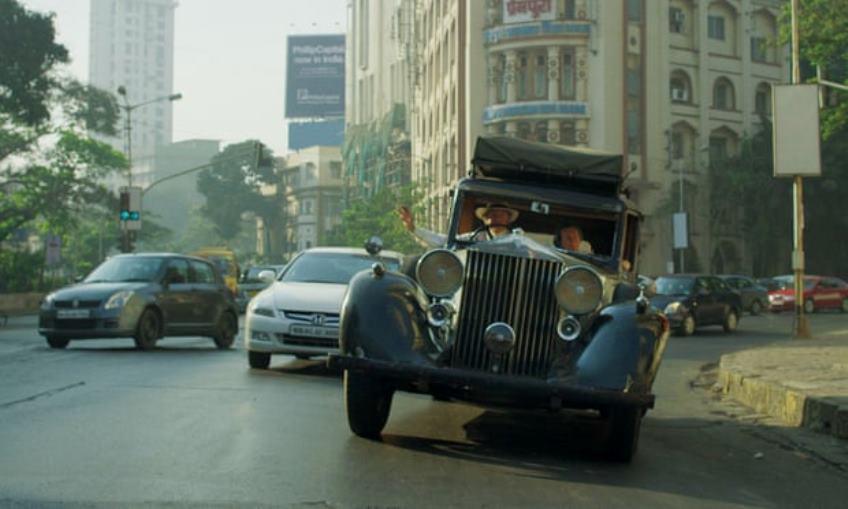
In that dual capacity Rupert was invited to the Chobi Mela Festival of Photography in Bangladesh in 2013. Rather than fly, Rupert decides to take his late father’s 1959 Rolls Royce, in a kind of tribute to the mileage his father had accumulated on it. Rupert is not unaware that the Rolls might be seen as a symbol of the British colonial past in India, nor is he bothered by it.
After careful planning, the Rolls is packed with everything the couple might need, and shipped to Mumbai in September 2012, after the monsoon season. The film follows their journey north across the northern plains of the eastern Himalayas, turning south over the Meghalaya Hills down to the Bay of Bengal in time for the Chobi Mela festival. They then make the decision not to return from Calcutta, but to to get the car shipped to Bangalore in a container truck and then “to motor” as Rupert says, back to Mumbai.
What soon becomes apparent is that the star of the film is the car. Impoverished kids cling to the step for a ride and chase after it; local news crews film it, and near Kohima, a military convoy escorts it through insurgent territory where “Dacoit” (members of a gang of armed robbers) would be attracted by the unusual sign of wealth. They ride through villages stopping at restaurants, but seldom engage with the people – except about transportation – or show us the local sites and customs or talk about socio-economic issues.
There are a couple of amusing exceptions, as when the couple arrive at the Majuli Island and hope to catch a boat on the Brahmaputra River, only to find no boats go upriver. Mr Bhaskar Mahanta, a police officer and film director, had seen the news footage of Mr Grey’s arrival and recognised him. By one of those coincidences, you couldn’t make up, Mahanta is looking for an Englishman with gravitas to play the Colonial Governor who locks up a rebel leader in the 1943 rebellion. Reluctant to take on that role and conscious of the festival date, Rupert declines. He changes his mind when Mahanta offers to get him a timesaving boat upriver after they shoot the scene.
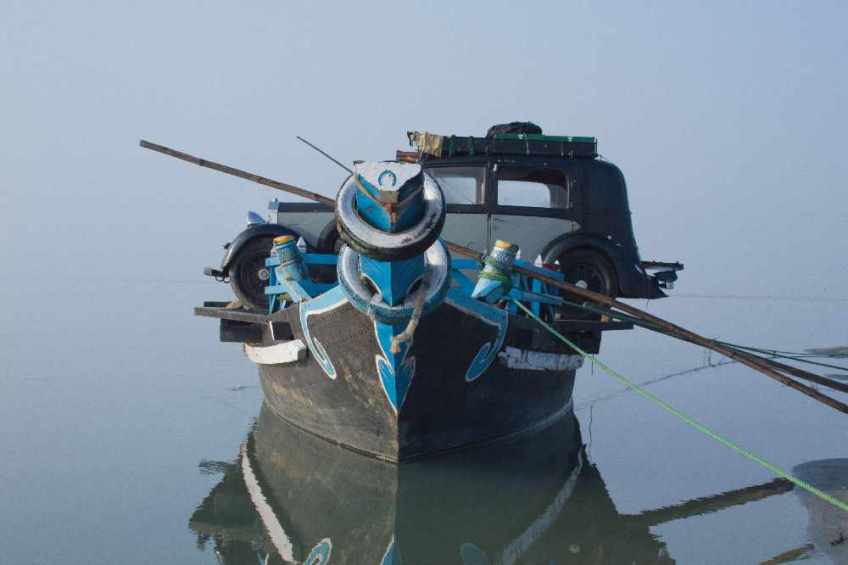
Another adventure occurs when the car is confiscated at the border with Bangladesh and Rupert has a run in with the National Board of Revenue. Here, Rupert ends up talking to the Minister of Finance of Bangladesh about taking his car into Bangladesh for one day. It is ultimately an old photo of Rupert with a blond-haired man who looks a bit like Boris Johnson that swings it. ‘Mr Grey knows very important people,’ the finance minister pronounces, which seems to carry weight.
This entire episode is again about the car, not about people. When Rupert leaves his car to present his case in Dhaka, he tells the customs’ official, ‘You look after my car with your life!’ and they shake hands on it. In terms of the local bureaucracy, the anecdote is somewhat condescending, but it is more entertaining than watching the couple driving through cities we never learn about or float down the Brahmaputra River.
Whether the “romantic” road is the voyage through another world (admittedly, difficult to do justice to in an 81-minute film), or the journey with Jan, 30 years after their first hippy trip to India, Jan takes a back seat. It is Rupert taking the photos, doing most of the talking and, from what we see, all of the driving. Early on she admits he is the risk taker of the family, and she goes along with it ‘to step outside of our everyday boundaries’. Their marriage does seem to be a strong one, as after 36 years of marriage they still hold hands on the beach in Goa on the last leg of their journey.

